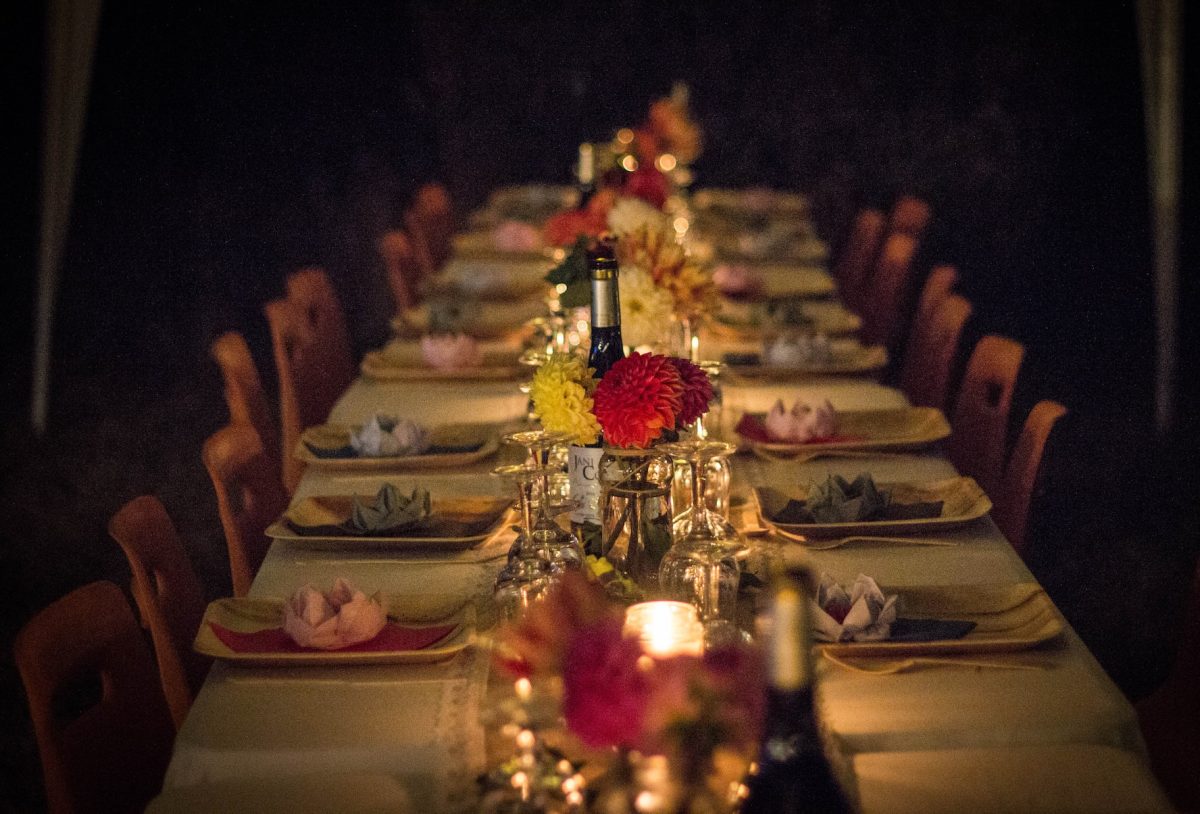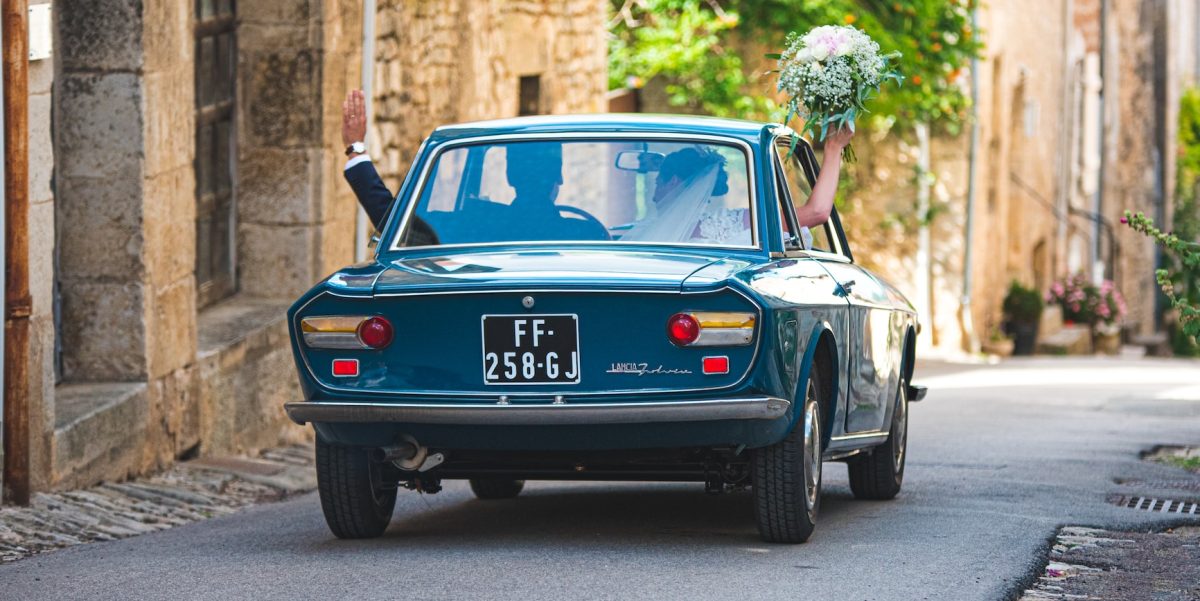Everything you need to know about French weddings
If you’ve been invited to a wedding in France, you’re in for a delightful experience. French weddings are elegant and lavish affairs, though they follow some different customs and traditions compared to typical Anglo-American weddings. As a guest, it is helpful to become familiar with some of the key differences so you know what to expect, can fully enjoy the occasion, and avoid any faux pas.
Some customs may well surprise you but follow the leads of others and don’t be shy to ask questions. Your hosts will surely appreciate your interest in experiencing their cultural traditions. Above all else, be prepared to celebrate with joie de vivre – the joy of living! A French wedding is a perfect place to embrace that spirit.
Two ceremonies – religious and civil
Religious ceremonies are becoming rarer in France, with most couples opting for a civil ceremony only. This typically takes place at the town hall, led by the mayor or his deputy. The bride and groom will exchange vows and sign official documents to solemnize the marriage and make it legally binding.
Couples who choose a religious wedding ceremony typically arrange for this to take place the day after the civil ceremony. Catholic weddings tend to be more formal while Protestant weddings have a slightly more casual and intimate feel. Attending a church wedding in France provides insight into the role of faith and tradition in French culture. Though increasingly secular, many French people still revere Catholic rites of passage. For the religious couple, a church wedding is the only fitting way to be joined for life before God and the community. If invited to such an occasion, appreciate the profound meaning behind all the pageantry. Keep an open and respectful perspective to gain an understanding of this cultural experience.

Photo de Kitera Dent sur Unsplash
Catholic weddings take place in beautiful cathedrals and churches, led by a priest, and are considered very traditional and ceremonial. During the ceremony, the priest will bless the rings, read passages from the Bible, and lead the couple through their vows. Friends and family participate as lecteurs to read scripture passages.
Wedding guests will usually have designated pews for seating. The front pews are traditionally reserved for close family, while pews in the middle of the nave seat other family and guests. Unlike Anglo-American weddings where guests typically sit in assigned seats on either the bride’s side or groom’s side, seating at French weddings is not formally segregated.
The témoins, or witnesses, play an especially important role in a French wedding. Chosen by the bride and groom, they act as both legal witnesses and master of ceremonies for the day. They handle logistics behind the scenes and give a toast to the newlyweds at the reception.
Also significant is the livret de famille, the couple’s family record booklet where the marriage certificate is recorded. The livret is presented during the ceremony, then signed by the officiant and witnesses to legalize the union.
After the ceremony, either civil or religious, the cortège is an important symbolic procession to celebrate the new Mr. and Mrs. as they make their first public appearance as a married couple. Friends and family usually decorate the getaway car beforehand to announce the newly married status to all around. Have your camera ready to capture a quick photo with the newlyweds—they will surely appreciate all photographic memories from the day.
What to wear
Wedding attire in France is typically formal, especially for evening weddings. However, unlike Anglo-American weddings there are no strict dress codes dictating specific styles or colors for guests. The focus is on dressing for a formal social occasion, rather than coordinating with the bridal party or other guests.
The bride may wear anything from a formal wedding gown to a stylish evening dress, though white is still a popular color. In some ceremonies, especially civil ones, the bride may opt for a chic Parisian cocktail dress or even a colorful suit. The groom and groomsmen will wear suits, tuxedos or sometimes even semi-formal attire like slacks and ties. For church weddings, the groom’s attire is usually more formal in black tie or even white tie.
For guests, formalwear is expected with men in suits, tuxedos or slacks and ties and women in evening dresses, gowns, or formal skirts and blouses. But again, no need to coordinate colors or avoid specific styles. Elegance and your own personal style are most important.
As for accessories like hats, gloves and handbags, use your judgment based on the formality of the event. A general rule is less is more – focus is on the couple, not lavish headpieces or statement jewelry. When in doubt, understated and minimal is always a safe choice. The most important accessory is simply your smile and willingness to celebrate!
Attending a French wedding allows you to experience a more individualistic and expressive sense of tradition. Focus on dressing in a way that makes you personally feel confident and beautiful. And remember that above all else, you are there to honor the couple—not make a fashion statement of your own.
The French wedding reception

Photo de Juliette F sur Unsplash
At the vin d’honneur which follows the ceremony, guests enjoy champagne, cocktails, hors d’oeuvres and appetizers while mingling and awaiting entry into the reception dinner. A champagne tower may be displayed for guests to pour and partake in a celebratory toast.
The wedding menu is an important highlight, with a lavish multi-course meal that incorporates fine cuisine and the best of French wines. Guests are served several courses including an appetizer, seafood entrée like lobster bisque or coquilles St. Jacques, palette cleanser, main meat dish, cheese platter, and fresh salad.
No French wedding is complete without a croquembouche. Family and friends gather around as the newlyweds share slices of this traditional pastry, enjoy a sweet bite themselves, then lean in for a sticky kiss. Though increasingly popular, the wedding cake tradition was historically less common at French weddings, although many couples now incorporate both.
French Wedding Party time
After dinner ends, the real fête begins! At most French weddings, guests continue celebrating into the early hours of the morning. Family and friends will migrate to another area of the reception venue for an after-party, complete with music, dancing, drinks and mingling. The bride and groom lead the way and set the tone for an evening of casual merriment and revelry.
Music is an integral part of the after-party. A live band, DJ, or simply a curated playlist will provide an energetic soundtrack for the next few hours. French party songs new and old will get guests out on the dance floor, while slower tunes allow for romance and conversation. Requests are always welcome, so feel free to suggest some of your favorite French songs to keep the cultural experience going.
Dancing at a French wedding after-party is essential, from groovy disco moves to slow waltzes under strings of fairy lights. Don’t be shy about joining in – just follow the lead of the bride and groom or other guests. If you need a break from the dance floor, grab another drink and chat with new friends at your table. The wee hours of the morning are when bonds and memories are made!
As the night goes on, entertainment may include games, photo slideshows or guestbook signing. Some couples arrange for additional activities like casino or arcade games, karaoke, cigar bars or escape rooms. Around 2 or 3 in the morning, onion soup is usually served to give guests sustenance to continue partying into dawn! Savored as a late-night snack, French onion soup with bread and cheese is perfect for soaking up excess champagne!
Tips and takeaways
Attending a wedding in France is a memorable cultural experience. Though traditions differ from typical Anglo weddings, the joy and romance of the occasion remain the same. To appreciate all the special moments, keep these tips in mind:
- Focus on the couple. You are there to honor and celebrate the newlyweds above all else. Offer your heartfelt congratulations and best wishes at every opportunity.
- Dress to impress. Formal attire is expected for the ceremony and reception. But no need to match other guests or avoid certain styles. Look and feel your elegant best.
- Participate fully. Join in ceremonial events like the receiving line, champagne toasts, croquembouche and dancing. Make eye contact, smile, raise your glass and say “Vive les mariés!“ with gusto.
- Savor the menu. Each course is thoughtfully prepared and paired to create an exceptional dining experience. Enjoy discovering new flavors and cuisines. The meal is a highlight of the celebration!
- Stay late and mingle. The after-party is when you can truly bond with the couple and other guests. Share lighthearted moments on the dance floor, over drinks and games. Create connections that last.
- Ask questions. Don’t be afraid to politely ask other guests or the couple questions about French wedding traditions. Your interest and enthusiasm for learning about cultural nuances will be appreciated.
- Bring an open mind. Some traditions may surprise you. But embrace each custom with a spirit of adventure and delight. A willingness to experience new cultures will enrich your understanding and enjoyment of the occasion.
Say « Merci! » Expressing thanks shows your genuine appreciation for the invitation and hospitality. A handwritten thank you card or note after the wedding is always a thoughtful French custom to observe.

Photo de Guillaume de Germain sur Unsplash


